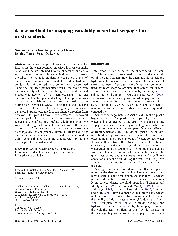摘要
A two-step approach was used to measure the flux across the water-sediment interface in river channels. A hollow tube was pressed into the streambed and an in situ sediment column of the streambed was created inside the tube. The hydraulic gradient between the two ends of the sediment column was measured. The vertical hydraulic conductivity of the sediment column was determined using a falling-head permeameter test in the river. Given the availability of the hydraulic gradient and vertical hydraulic conductivity of the streambed, Darcy's law was used to calculate the specific discharge. This approach was applied to the Elkhorn River and one tributary in northeastern Nebraska, USA. The results suggest that the magnitude of the vertical flux varied greatly within a short distance. Furthermore, the flux can change direction from downward to upward between two locations only several meters apart. This spatial pattern of variation probably represents the inflow and outflow within the hyporheic zone, not the regional ambient flow systems. In this study, a thermal infrared camera was also used to detect the discharge locations of groundwater in the streambed. After the hydraulic gradient and the vertical hydraulic conductivity were estimated from the groundwater spring, the discharge rate was calculated.
- 出版日期2009-5
- 单位北京师范大学
